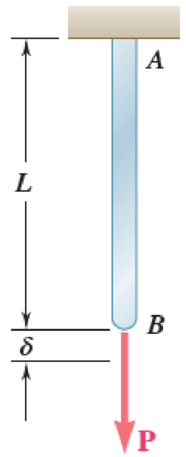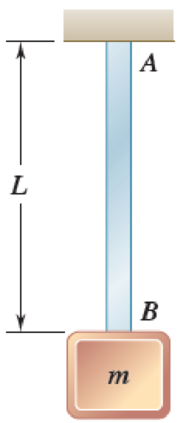
VECTOR MECHANICS FOR ENGINEERS W/CON >B
12th Edition
ISBN: 9781260804638
Author: BEER
Publisher: MCG
expand_more
expand_more
format_list_bulleted
Textbook Question
Chapter 19.1, Problem 19.28P
From

(a)

(b)
Fig. P19.28
Expert Solution & Answer
Want to see the full answer?
Check out a sample textbook solution
Students have asked these similar questions
I need the real handdrawing complete it by adding these :
Pneumatic Valves
Each linear actuator must be controlled by a directional control valve (DCV) (e.g., 5/2 or 4/2 valve).
The bi-directional motor requires a reversible valve to change rotation direction.
Pressure Regulators & Air Supply
Include two pressure regulators as per the assignment requirement.
Show the main compressed air supply line connecting all components.
Limit Switches & Safety Features
Attach limit switches to each actuator to detect positions.
Implement a two-handed push-button safety system to control actuator movement.
Connections Between Components
Draw air supply lines linking the compressor, valves, and actuators.
Clearly label all inputs and outputs for better understanding.
An elastic bar of the length L and cross section area A is rigidly attached
to the ceiling of a room, and it supports a mass M. Due to the
acceleration of gravity g the rod deforms vertically. The deformation of
the rod is measured by the vertical displacement u(x) governed by the
following equations:
dx
(σ(x)) + b(x) = 0
PDE
σ(x) = Edx
du
Hooke's law
(1)
b(x) = gp=
body force per unit volume
where E is the constant Young's modulus, p is the density, and σ(x) the
axial stress in the rod.
g
* I u(x)
L
2
An elastic bar of the length L and cross section area A is rigidly attached
to the ceiling of a room, and it supports a mass M. Due to the
acceleration of gravity g the rod deforms vertically. The deformation of
the rod is measured by the vertical displacement u(x) governed by the
following equations:
dx
(σ(x)) + b(x) = 0
PDE
σ(x) = Edx
du
Hooke's law
(1)
b(x) = gp=
body force per unit volume
where E is the constant Young's modulus, p is the density, and σ(x) the
axial stress in the rod.
g
* I u(x)
L
2
Chapter 19 Solutions
VECTOR MECHANICS FOR ENGINEERS W/CON >B
Ch. 19.1 - A particle moves in simple harmonic motion....Ch. 19.1 - A particle moves in simple harmonic motion....Ch. 19.1 - Prob. 19.3PCh. 19.1 - Prob. 19.4PCh. 19.1 - Prob. 19.5PCh. 19.1 - Prob. 19.6PCh. 19.1 - Prob. 19.7PCh. 19.1 - A simple pendulum consisting of a bob attached to...Ch. 19.1 - Prob. 19.9PCh. 19.1 - Prob. 19.10P
Ch. 19.1 - Prob. 19.11PCh. 19.1 - Prob. 19.12PCh. 19.1 - Prob. 19.13PCh. 19.1 - Prob. 19.14PCh. 19.1 - A 5-kg collar C is released from rest in the...Ch. 19.1 - Prob. 19.16PCh. 19.1 - Prob. 19.17PCh. 19.1 - An 11-lb block is attached to the lower end of a...Ch. 19.1 - Block A has a mass m and is supported by the...Ch. 19.1 - A 13.6-kg block is supported by the spring...Ch. 19.1 - Prob. 19.21PCh. 19.1 - 19.21 and 19.22A 50-kg block is supported by the...Ch. 19.1 - Prob. 19.23PCh. 19.1 - The period of vibration of the system shown is...Ch. 19.1 - Prob. 19.25PCh. 19.1 - Prob. 19.26PCh. 19.1 - From mechanics of materials, it is known that for...Ch. 19.1 - From mechanics of materials it is known that when...Ch. 19.1 - Prob. 19.29PCh. 19.1 - Prob. 19.30PCh. 19.1 - If h = 700 mm and d = 500 mm and each spring has a...Ch. 19.1 - Prob. 19.32PCh. 19.1 - Prob. 19.33PCh. 19.1 - Prob. 19.34PCh. 19.1 - Prob. 19.35PCh. 19.1 - Prob. 19.36PCh. 19.2 - The 9-kg uniform rod AB is attached to springs at...Ch. 19.2 - Prob. 19.38PCh. 19.2 - Prob. 19.39PCh. 19.2 - Prob. 19.40PCh. 19.2 - A 15-lb slender rod AB is riveted to a 12-lb...Ch. 19.2 - A 20-lb uniform cylinder can roll without sliding...Ch. 19.2 - A square plate of mass m is held by eight springs,...Ch. 19.2 - Prob. 19.44PCh. 19.2 - Prob. 19.45PCh. 19.2 - A three-blade wind turbine used for research is...Ch. 19.2 - A connecting rod is supported by a knife-edge at...Ch. 19.2 - A semicircular hole is cut in a uniform square...Ch. 19.2 - A uniform disk of radius r = 250 mm is attached at...Ch. 19.2 - A small collar of mass 1 kg is rigidly attached to...Ch. 19.2 - Prob. 19.51PCh. 19.2 - Prob. 19.52PCh. 19.2 - Prob. 19.53PCh. 19.2 - Prob. 19.54PCh. 19.2 - The 8-kg uniform bar AB is hinged at C and is...Ch. 19.2 - Prob. 19.56PCh. 19.2 - Prob. 19.57PCh. 19.2 - Prob. 19.58PCh. 19.2 - Prob. 19.59PCh. 19.2 - Prob. 19.60PCh. 19.2 - Two uniform rods, each of weight W = 24 lb and...Ch. 19.2 - A homogeneous rod of mass per unit length equal to...Ch. 19.2 - Prob. 19.63PCh. 19.2 - Prob. 19.64PCh. 19.2 - A 60-kg uniform circular plate is welded to two...Ch. 19.2 - Prob. 19.66PCh. 19.2 - Prob. 19.67PCh. 19.2 - The centroidal radius of gyration ky of an...Ch. 19.3 - Two blocks each have a mass 1.5 kg and are...Ch. 19.3 - Prob. 19.70PCh. 19.3 - Prob. 19.71PCh. 19.3 - Prob. 19.72PCh. 19.3 - Prob. 19.73PCh. 19.3 - Prob. 19.74PCh. 19.3 - Prob. 19.75PCh. 19.3 - Prob. 19.76PCh. 19.3 - Prob. 19.77PCh. 19.3 - Blade AB of the experimental wind-turbine...Ch. 19.3 - A 15-lb uniform cylinder can roll without sliding...Ch. 19.3 - Prob. 19.80PCh. 19.3 - Prob. 19.81PCh. 19.3 - Prob. 19.82PCh. 19.3 - Prob. 19.83PCh. 19.3 - Prob. 19.84PCh. 19.3 - A homogeneous rod of weight W and length 2l is...Ch. 19.3 - A 10-lb uniform rod CD is welded at C to a shaft...Ch. 19.3 - Prob. 19.87PCh. 19.3 - Prob. 19.88PCh. 19.3 - Prob. 19.89PCh. 19.3 - Prob. 19.90PCh. 19.3 - Prob. 19.91PCh. 19.3 - Prob. 19.92PCh. 19.3 - Prob. 19.93PCh. 19.3 - A uniform rod of length L is supported by a...Ch. 19.3 - Prob. 19.95PCh. 19.3 - Three collars each have a mass m and are connected...Ch. 19.3 - Prob. 19.97PCh. 19.3 - As a submerged body moves through a fluid, the...Ch. 19.4 - A 4-kg collar can slide on a frictionless...Ch. 19.4 - Prob. 19.100PCh. 19.4 - A collar with mass m that slides on a frictionless...Ch. 19.4 - Prob. 19.102PCh. 19.4 - The 1.2-kg bob of a simple pendulum of length l =...Ch. 19.4 - Prob. 19.104PCh. 19.4 - A precision experiment sits on an optical table...Ch. 19.4 - Prob. 19.106PCh. 19.4 - Prob. 19.107PCh. 19.4 - The crude-oil pumping rig shown is driven at 20...Ch. 19.4 - Prob. 19.109PCh. 19.4 - Prob. 19.110PCh. 19.4 - Prob. 19.111PCh. 19.4 - Rod AB is rigidly attached to the frame of a motor...Ch. 19.4 - Prob. 19.113PCh. 19.4 - Prob. 19.114PCh. 19.4 - A motor of weight 100 lb is supported by four...Ch. 19.4 - Prob. 19.116PCh. 19.4 - Prob. 19.117PCh. 19.4 - Prob. 19.118PCh. 19.4 - Prob. 19.119PCh. 19.4 - One of the tail rotor blades of a helicopter has...Ch. 19.4 - Prob. 19.121PCh. 19.4 - Prob. 19.122PCh. 19.4 - Prob. 19.123PCh. 19.4 - Prob. 19.124PCh. 19.4 - A 60-lb disk is attached with an eccentricity e =...Ch. 19.4 - A small trailer and its load have a total mass of...Ch. 19.5 - Prob. 19.127PCh. 19.5 - Prob. 19.128PCh. 19.5 - Prob. 19.129PCh. 19.5 - Prob. 19.130PCh. 19.5 - Prob. 19.131PCh. 19.5 - Prob. 19.132PCh. 19.5 - Prob. 19.133PCh. 19.5 - Prob. 19.134PCh. 19.5 - Prob. 19.135PCh. 19.5 - Prob. 19.136PCh. 19.5 - Prob. 19.137PCh. 19.5 - Prob. 19.138PCh. 19.5 - A machine element weighing 500 lb is supported by...Ch. 19.5 - Prob. 19.140PCh. 19.5 - Prob. 19.141PCh. 19.5 - Prob. 19.142PCh. 19.5 - Prob. 19.143PCh. 19.5 - A 36-lb motor is bolted to a light horizontal beam...Ch. 19.5 - One of the tail rotor blades of a helicopter has...Ch. 19.5 - Prob. 19.146PCh. 19.5 - Prob. 19.147PCh. 19.5 - Prob. 19.148PCh. 19.5 - Prob. 19.149PCh. 19.5 - Prob. 19.150PCh. 19.5 - The suspension of an automobile can be...Ch. 19.5 - Prob. 19.152PCh. 19.5 - Prob. 19.153PCh. 19.5 - Prob. 19.154PCh. 19.5 - 19.155 and 19.156 Draw the electrical analog of...Ch. 19.5 - Prob. 19.156PCh. 19.5 - 19.157 and 19.158Write the differential equations...Ch. 19.5 - 19.157 and 19.158Write the differential equations...Ch. 19 - An automobile wheel-and-tire assembly of total...Ch. 19 - Prob. 19.160RPCh. 19 - Disks A and B weigh 30 lb and 12 lb, respectively,...Ch. 19 - A small trailer and its load have a total mass of...Ch. 19 - A 0.8-lb ball is connected to a paddle by means of...Ch. 19 - Prob. 19.164RPCh. 19 - A 4-lb uniform rod is supported by a pin at O and...Ch. 19 - Prob. 19.166RPCh. 19 - Prob. 19.167RPCh. 19 - A small ball of mass m attached at the midpoint of...Ch. 19 - Prob. 19.169RPCh. 19 - If either a simple or a compound pendulum is used...
Knowledge Booster
Learn more about
Need a deep-dive on the concept behind this application? Look no further. Learn more about this topic, mechanical-engineering and related others by exploring similar questions and additional content below.Similar questions
- متوسعة الفرج بو عمامة المستوى رم الواجب المنزلي رقم 04 تمرین الوان حسب يتمعن العبارات الأتية : A= (+2)+(-45) B=(+13)- C = (+17)-(+13)-(-20)+(-19 D= [(-15)-(+15)]-[(+20) + هست قیم مدرج مبدؤه النقطة ة الطول :tcm A(-2,5): B(+ 2,5) ≤ C (+5) المسافتين : BAD ين الثاني لمستوي مبدؤه 8 وحدتهarrow_forwardPlease do not rely too much on AI, because its answer may be wrong. Please consider it carefully and give your own answer!!!!! You can borrow ideas from AI, but please do not believe its answer.Very very grateful! ( If you write by hand or don't use AI, I'll give you a big thumbs up ) Please do not copy other's work,i will be very very grateful!!Please do not copy other's work,i will be very very grateful!!arrow_forwardA thin uniform rod of mass m and length 2r rests in a smooth hemispherical bowl of radius r. A moment M = mgr horizontal plane. is applied to the rod. Assume that the bowl is fixed and its rim is in the HINT: It will help you to find the length l of that portion of the rod that remains outside the bowl. M 2r Ꮎ a) How many degrees of freedom does this system have? b) Write an equation for the virtual work in terms of the angle 0 and the motion of the center of mass (TF) c) Derive an equation for the variation in the position of the center of mass (i.e., Sŕƒ) a. HINT: Use the center of the bowl as the coordinate system origin for the problem. d) In the case of no applied moment (i.e., M = 0), derive an equation that can be used to solve for the equilibrium angle of the rod. DO NOT solve the equation e) In the case of an applied moment (i.e., M: = mgr 4 -) derive an equation that can be used to solve for the equilibrium angle of the rod. DO NOT solve the equation. f) Can the angle 0 and…arrow_forward
- Please do not rely too much on chatgpt, because its answer may be wrong. Please consider it carefully and give your own answer. You can borrow ideas from gpt, but please do not believe its answer.Very very grateful! Please do not copy other's work,i will be very very grateful!!Please do not copy other's work,i will be very very grateful!!arrow_forward= The frame shown is fitted with three 50 cm diameter frictionless pulleys. A force of F = 630 N is applied to the rope at an angle ◊ 43°. Member ABCD is attached to the wall by a fixed support at A. Find the forces indicated below. Note: The rope is tangent to the pully (D) and not secured at the 3 o'clock position. a b •C *су G E e d BY NC SA 2013 Michael Swanbom Values for dimensions on the figure are given in the following table. Note the figure may not be to scale. Variable Value a 81 cm b 50 cm с 59 cm d 155 cm For all answers, take x as positive to the right and positive upward. At point A, the fixed support exerts a force of: A = + ĴN and a reaction couple of: →> ΜΑ Member CG is in Select an answer magnitude У as k N-m. and carries a force of N.arrow_forwardThe lower jaw AB [Purple 1] and the upper jaw-handle AD [Yellow 2] exert vertical clamping forces on the object at R. The hand squeezes the upper jaw-handle AD [2] and the lower handle BC [Orane 4] with forces F. (Member CD [Red 3] acts as if it is pinned at D, but, in a real vise-grips, its position is actually adjustable.) The clamping force, R, depends on the geometry and on the squeezing force F applied to the handles. Determine the proportionality between the clamping force, R, and the squeezing force F for the dimensions given. d3 d4 R 1 B d1 2 d2 D... d5 F 4 F Values for dimensions on the figure are given in the following table. Note the figure may not be to scale. Variable Value d1 65 mm d2 156 mm d3 50 mm 45 d4 d5 113 mm 30 mm R = Farrow_forward
- A triangular distributed load of max intensity w =460 N/m acts on beam AB. The beam is supported by a pin at A and member CD, which is connected by pins at C and D respectively. Determine the reaction forces at A and C. Enter your answers in Cartesian components. Assume the masses of both beam AB and member CD are negligible. cc 040 BY NC SA 2016 Eric Davishahl W A C D -a- B Ул -b- x Values for dimensions on the figure are given in the following table. Note the figure may not be to scale. Variable Value α 5.4 m b 8.64 m C 3.24 m The reaction at A is A = i+ ĴN. λ = i+ Ĵ N. The reaction at C is C =arrow_forward56 Clamps like the one shown are commonly used in woodworking applications. This clamp has the dimensions given in the table below the figure, and its jaws are mm thick (in the direction perpendicular to the plane of the picture). a.) The screws of the clamp are adjusted so that there is a uniform pressure of P = 150 kPa being applied to the workpieces by the jaws. Determine the force carried in each screw. Hint: the uniform pressure can be modeled in 2-D as a uniform distributed load with intensity w = Pt (units of N/m) acting over the length of contact between the jaw and the workpiece. b.) Determine the minimum vertical force (parallel to the jaws) required to pull either one of the workpieces out of the clamp jaws. Use a coefficient of static friction between all contacting surfaces of μs = 0.56 and the same clamping pressure given for part (a). 2013 Michael Swanbom A B C a Values for dimensions on the figure are given in the following table. Note the figure may not be to scale.…arrow_forwardDetermine the force in each member of the space truss given F=5 kN. Use positive to indicate tension and negative to indicate compression. F E Z -2 m. B 3 m C 5 m 3 m A -4 m. AB = KN FAC = FAD = KN KN KN FBC = KN FBD FBE = = KN Farrow_forward
arrow_back_ios
SEE MORE QUESTIONS
arrow_forward_ios
Recommended textbooks for you
 Elements Of ElectromagneticsMechanical EngineeringISBN:9780190698614Author:Sadiku, Matthew N. O.Publisher:Oxford University Press
Elements Of ElectromagneticsMechanical EngineeringISBN:9780190698614Author:Sadiku, Matthew N. O.Publisher:Oxford University Press Mechanics of Materials (10th Edition)Mechanical EngineeringISBN:9780134319650Author:Russell C. HibbelerPublisher:PEARSON
Mechanics of Materials (10th Edition)Mechanical EngineeringISBN:9780134319650Author:Russell C. HibbelerPublisher:PEARSON Thermodynamics: An Engineering ApproachMechanical EngineeringISBN:9781259822674Author:Yunus A. Cengel Dr., Michael A. BolesPublisher:McGraw-Hill Education
Thermodynamics: An Engineering ApproachMechanical EngineeringISBN:9781259822674Author:Yunus A. Cengel Dr., Michael A. BolesPublisher:McGraw-Hill Education Control Systems EngineeringMechanical EngineeringISBN:9781118170519Author:Norman S. NisePublisher:WILEY
Control Systems EngineeringMechanical EngineeringISBN:9781118170519Author:Norman S. NisePublisher:WILEY Mechanics of Materials (MindTap Course List)Mechanical EngineeringISBN:9781337093347Author:Barry J. Goodno, James M. GerePublisher:Cengage Learning
Mechanics of Materials (MindTap Course List)Mechanical EngineeringISBN:9781337093347Author:Barry J. Goodno, James M. GerePublisher:Cengage Learning Engineering Mechanics: StaticsMechanical EngineeringISBN:9781118807330Author:James L. Meriam, L. G. Kraige, J. N. BoltonPublisher:WILEY
Engineering Mechanics: StaticsMechanical EngineeringISBN:9781118807330Author:James L. Meriam, L. G. Kraige, J. N. BoltonPublisher:WILEY

Elements Of Electromagnetics
Mechanical Engineering
ISBN:9780190698614
Author:Sadiku, Matthew N. O.
Publisher:Oxford University Press

Mechanics of Materials (10th Edition)
Mechanical Engineering
ISBN:9780134319650
Author:Russell C. Hibbeler
Publisher:PEARSON

Thermodynamics: An Engineering Approach
Mechanical Engineering
ISBN:9781259822674
Author:Yunus A. Cengel Dr., Michael A. Boles
Publisher:McGraw-Hill Education

Control Systems Engineering
Mechanical Engineering
ISBN:9781118170519
Author:Norman S. Nise
Publisher:WILEY

Mechanics of Materials (MindTap Course List)
Mechanical Engineering
ISBN:9781337093347
Author:Barry J. Goodno, James M. Gere
Publisher:Cengage Learning

Engineering Mechanics: Statics
Mechanical Engineering
ISBN:9781118807330
Author:James L. Meriam, L. G. Kraige, J. N. Bolton
Publisher:WILEY
Mechanical SPRING DESIGN Strategy and Restrictions in Under 15 Minutes!; Author: Less Boring Lectures;https://www.youtube.com/watch?v=dsWQrzfQt3s;License: Standard Youtube License